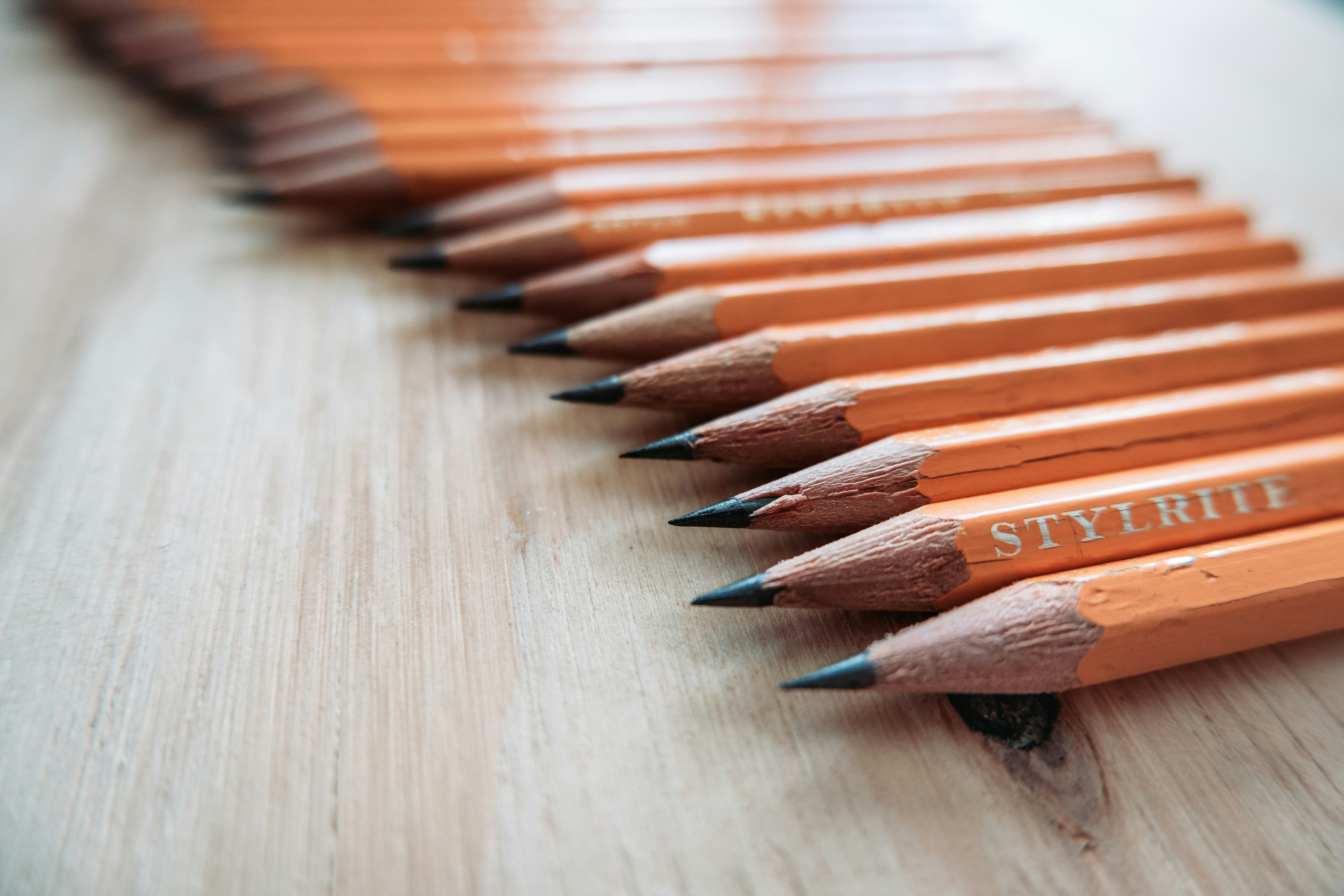Introduction to Graphite and Lead Pencils
Pencils are an essential tool in our daily lives, commonly used for writing, drawing, and various forms of art. The two primary types of pencils—graphite and lead—are often confused, but they have distinct compositions and functionalities. This blog post aims to elucidate what graphite and lead pencils are, highlight the differences between them, and discuss their respective purposes.
What are Graphite Pencils?
Graphite pencils, which are the more prevalent type of pencil found today, use graphite as their core material. Graphite is a form of carbon, and its unique properties allow for smooth and precise writing or drawing. Typically encased in wood or a composite material, graphite pencils are available in various hardness levels, denoted by numbers and letters. For example, a pencil graded ‘H’ is harder and produces lighter marks, while a ‘B’ pencil is softer and yields darker marks. Artists often prefer these pencils for their ability to create a range of tones and textures.
What are Lead Pencils?
On the other hand, the term ‘lead pencils’ can be misleading. Traditionally, they were thought to contain lead, a toxic metal; however, modern lead pencils contain no actual lead. Instead, the core is composed of a mixture of graphite and clay, which allows for different grades of hardness. The term ‘lead pencil’ is a relic of the past, stemming from the materials used in the earliest writing instruments. Today, lead pencils refer to the same products as graphite pencils, but the name has persisted in popular use.
Differences and Purposes of Graphite and Lead Pencils
The primary difference between graphite and lead pencils lies in their composition and nomenclature. While both terms are often used interchangeably, understanding their distinctions is important for users. Graphite pencils focus on the pure graphite core that allows for smoother application and vibrant color. In contrast, lead pencils, as a term, refers to the same instrument but emphasizes the vintage association with lead content.
The purpose of both types of pencils is to provide a reliable and versatile writing or drawing tool. Graphite pencils are favored in artistic settings for shading and precision, while lead (graphite) pencils are suitable for general writing tasks, such as taking notes or completing assignments. Fortunately, the advancements in pencil manufacturing have led to non-toxic, safe products, regardless of the term used.
In conclusion, the differentiation between graphite and lead pencils is primarily semantic, as both refer to modern products composed predominantly of graphite. Understanding these terms can enhance your selection process, ensuring that you choose the correct pencil for your artistic or writing needs. The next time you reach for a pencil, whether it’s labelled graphite or lead, you can be assured that you possess a tool designed for creativity and expression. It’s really about personal preference.
